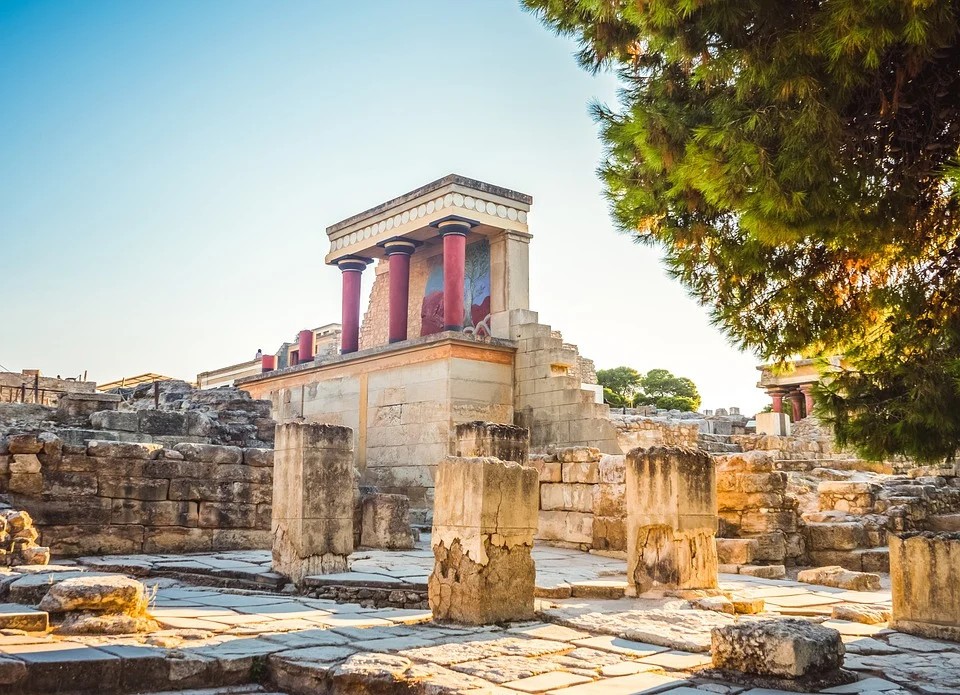Palace of Knossos
Palace of Knossos, located just outside Heraklion, Crete, is one of the most significant archaeological sites in Greece and a key symbol of Minoan civilization. Dating back to around 1900 BCE, the palace was the largest and most elaborate of the Minoan palaces, serving as a political, religious, and cultural center. Knossos was once home to the legendary King Minos and is famously linked to the myth of the Minotaur, a creature said to live in a labyrinth beneath the palace. The site consists of a complex network of rooms, corridors, courtyards, and frescoes, many of which depict daily life, nature, and religious rituals of the Minoans. Notable features include the large central courtyard, intricate staircases, and vibrant frescoes, such as the famous “Fresco of the Dolphins” and the “Prince of the Lilies.” Excavated by British archaeologist Sir Arthur Evans in the early 20th century, the palace’s partially restored ruins provide a fascinating glimpse into the advanced architectural and artistic achievements of the Minoans. Today, the Palace of Knossos is one of the most visited archaeological sites in Greece, offering visitors a chance to step back in time and explore the heart of ancient Minoan culture.

